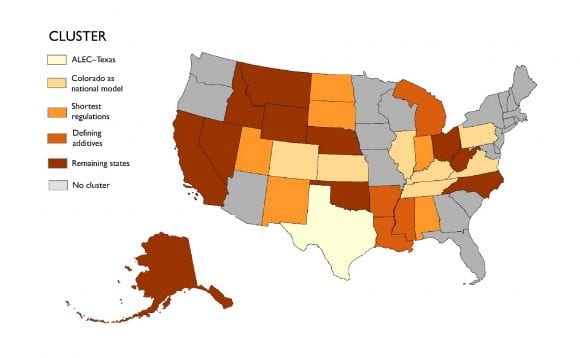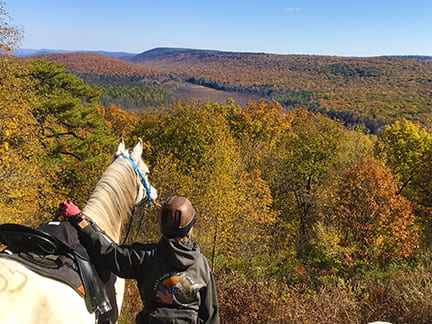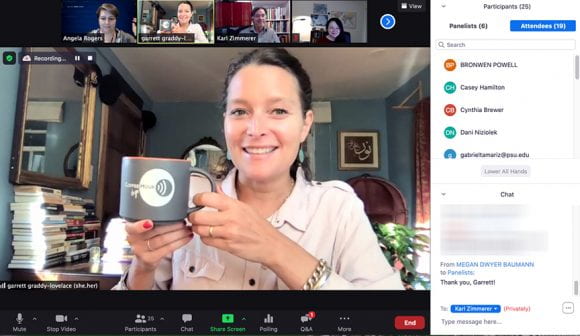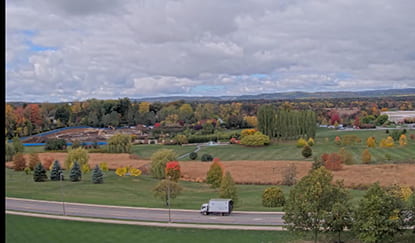IMAGE OF THE WEEK
 A five-cluster analysis, with groupings that best matched the manual review of the regulations, was used to qualitatively discern patterns across the states, in the study, “Disclosing Influence: Hydraulic fracturing, interest groups, and state policy processes in the United States,” led by Jenn Baka. Map: Harrison Cole
A five-cluster analysis, with groupings that best matched the manual review of the regulations, was used to qualitatively discern patterns across the states, in the study, “Disclosing Influence: Hydraulic fracturing, interest groups, and state policy processes in the United States,” led by Jenn Baka. Map: Harrison Cole
GOOD NEWS
Alumnus Sid Pandey, who graduated in 2014, was selected as a member of URISA’s Vanguard Cabinet for their 2021–23 cohort.
Alumnus Martin von Wyss, who graduated in 1994, has launched World Wine Regions, worldwineregions.com, an interactive atlas of the world’s wine regions.
Call for Presentations: The 2021 Education Summit @ Esri UC will highlight presentations showing how GIS is being used in education to connect people together and shape our future. The deadline to submit a proposal for your presentation is Oct. 30, 2020.
American Geographic Society September 2020 Newsletter is available.
Upcoming activities in the Department of Geography
COFFEE HOUR
Agricultural policy encompasses a vast, multi-scalar array of laws, regimes, regulations, politics, supports, and governing paradigms related to food, land use, land tenure, water, trade, infrastructure, research, and more. Seeds appear, but largely in relation to phytosanitary and intellectual property rules. (Labor is also missing.) Dominant agricultural policies, epitomized in the United States Farm Bill, avoid addressing much less supporting agricultural biodiversity as such.
NEWS
Even though State governments routinely rely upon interest groups to help them as they craft legislation, researchers found that certain peer-leader states, like Pennsylvania and Colorado, have greater influence in shaping states’ fracking policies, in a study led by Penn State Professor of Geography Jennifer Baka.
The study, titled “Disclosing Influence: Hydraulic fracturing, interest groups, and state policy processes in the United States,” revealed two important findings, Baka said.
Louisa Holmes is among the four
Four Penn State researchers have joined the Consortium to Combat Substance Abuse, part of the Social Science Research Institute, including faculty members from the colleges of Engineering, Earth and Mineral Sciences, and Health and Human Development.
The Consortium to Combat Substance Abuse (CCSA) brings together researchers, educators, and practitioners from Penn State campuses to develop and implement effective programs, policies, and practices aimed at preventing and treating addiction and its spillover effects on children, families, and communities.
Geography Alumna Britt Eckerstrom quoted
On June 27, the National Women’s Soccer League’s Portland Thorns FC and North Carolina Courage took the field, marking the first return of a North American professional sports league since the start of the coronavirus pandemic.
RECENTLY PUBLISHED
Historical incidence of mid‐autumn wind storms in New England
Simonson, JM, Birkel, SD, Maasch, KA, Mayewski, PA, Lyon, B, Carleton, AM.
Meteorological Applications
https://doi.org/10.1002/met.1952
New England has seen a number of mid‐autumn (October–November) wind storms—high‐wind events associated with extratropical cyclones—in recent years that have produced extensive infrastructure damage, raising concerns that these events may become more common in a changing climate. Storms developing at this time of year are unique in that they can have dominant cold‐season characteristics while also being fueled by warm‐season moisture sources (such as the remnants of tropical cyclones) or the result of an extratropical transition. To provide insights on the behavior of such storms, we explore recent storm frequency and intensity by using reanalysis and station‐based meteorological observations onward from 1979. Variables taken into consideration include 10 m wind speed, sea‐level pressure and precipitation. The results do not show a statistically significant increase in the overall frequency of mid‐autumn wind storms nor of their intensity with respect to central pressure or surface wind speeds. However, there is a statistically significant trend toward increasing precipitation accompanying wind storms with maximum 10 m wind gusts greater than 26 m⋅s−1 (58 mph). While stronger high‐wind events tend to be associated with lower central sea‐level pressure values and substantial intensification rates, other factors such as storm tracks and the pressure gradient across the New England region also affect the development and overall impact of storms. This study highlights the variety of elements, such as the background climate conditions, which could potentially increase the risk of wind damage in a warming world.
Spatial patterns of nineteenth century fire severity persist after fire exclusion and a twenty-first century wildfire in a mixed conifer forest landscape, Southern Cascades, USA
Taylor, A.H., Airey-Lauvaux, C., Estes, B. et al.
Landscape Ecology
https://doi.org/10.1007/s10980-020-01118-1
Context: Spatial patterns of fire severity are influenced by fire-vegetation patch dynamics and topography. Since the late nineteenth century, fire exclusion has increased fuels and recent fire severity patterns may diverge from historical patterns.
Objectives: We used data from a 2008 wildfire burning in a landscape with known nineteenth century fire severity patterns to answer the following questions: (1) Were the spatial patterns of fire severity and fire effects after the 2008 fire similar to those in the late nineteenth century? (2) What factors were most important in controlling spatial patterns of fire severity in 2008?
Methods: Fire severity patterns in the late nineteenth century were identified by Beaty and Taylor (J Veg Sci 18:879, 2001) using dendroecology. Plots were remeasured after the 2008 fire and geospatial layers of vegetation type, topography, fire weather, daily fire extent and fire severity were used to identify controls on 2008 fire severity.
Results: Fire severity in 2008 varied in ways similar to the nineteenth century. Tree mortality and bark char in plots were lowest on lower slopes and southwest facing slopes, intermediate on middle slopes, and highest on upper slopes and northeast slopes. At the landscape scale, vegetation type, elevation, slope aspect, slope position and weather were the variables controlling fire severity.
Conclusions: Spatial patterns of fire severity persisted, despite more than a century of fire exclusion. Our findings suggest that wildfires burning under moderate conditions even with a warming climate can help reduce the fire deficit and promote forest resilience in fire prone landscapes.
Design of a Serious Game to Inform the Public About the Critical Zone
Pejman Sajjadi, Mahda M. Bagher, Zheng Cui, Jessica G. Myrick, Janet K. Swim, Timothy S. White, Alexander Klippel
2020 IEEE 8th International Conference on Serious Games and Applications for Health (SeGAH)
doi: 10.1109/SeGAH49190.2020.9201697
https://www.researchgate.net/publication/344405091_Design_of_a_Serious_Game_to_Inform_the_Public_About_the_Critical_Zone
The Critical Zone (CZ), the near surface more portion of the terrestrial Earth is a complex concept that plays a pivotal role in the food-energy-water nexus. Due to its complexity, the concept of the CZ and its components are not well understood by society. Challenges range from imagining the invisible (the soil, rock, and water beneath us) to understanding complex relations between the involved components. To create awareness on a societal level, we have initiated a transdisciplinary project driven by immersive and gaming technologies that allow for an extension of what physical reality offers society about the concept of the CZ. We have developed a serious iVR game that enables learners to have a concrete experience about the CZ, and how natural and human processes affect it.




